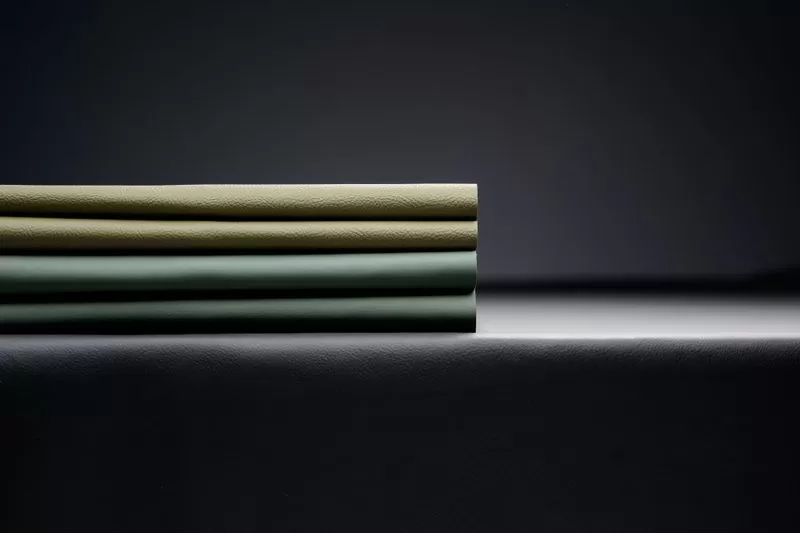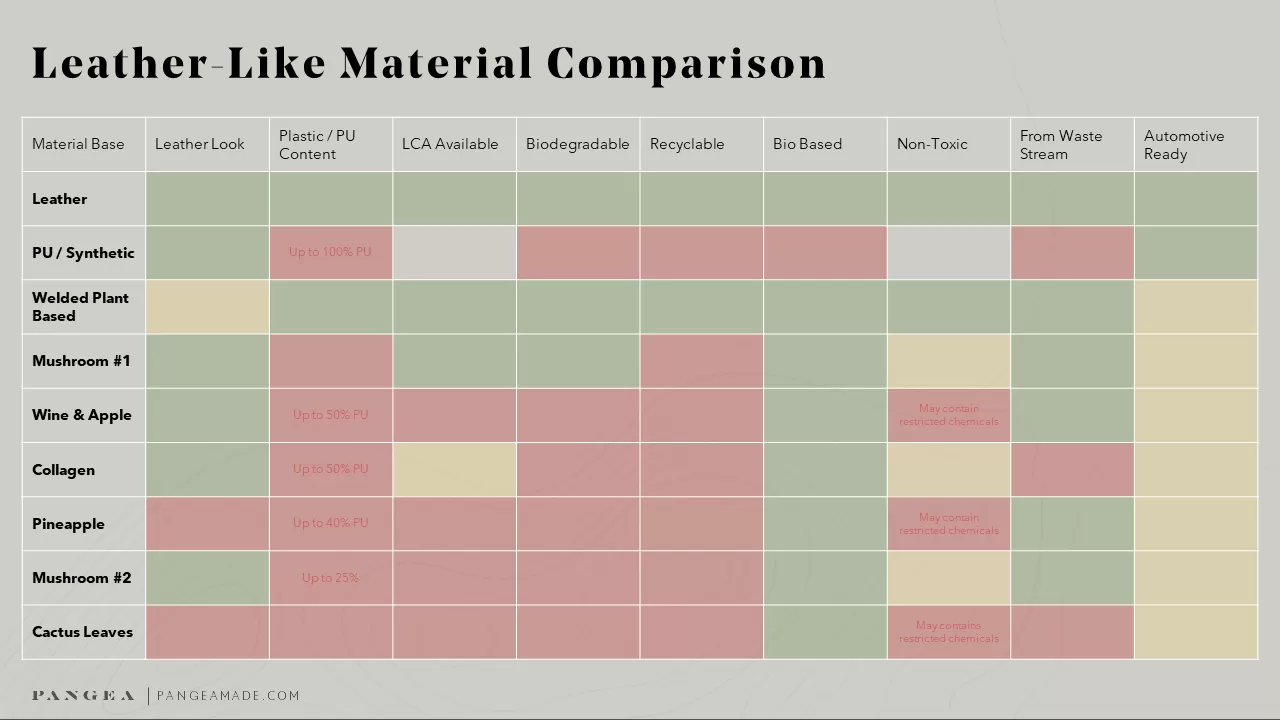
In The News
Leather-Like Material Comparison
January 16, 2024
Leather is commonly used in automotive interiors for several reasons, including its aesthetic appeal, comfort, durability, and perceived luxury. Here are some key reasons why leather is a popular choice for car interiors:
- Luxurious Appearance: Leather is often associated with luxury and elegance. The smooth, supple texture and rich colors of leather can enhance the overall aesthetic of a car’s interior, giving it a premium and sophisticated feel.
- Comfort: Leather upholstery is known for its comfort. It has a natural ability to adjust to body temperature, providing a comfortable seating experience in various weather conditions. Leather is also soft to the touch, making it a desirable option for long drives.
- Durability: High-quality leather is durable and resistant to wear and tear. It can withstand regular use and exposure to sunlight without losing its appearance or structural integrity. This durability makes it a practical choice for automotive interiors, where materials need to endure daily use and potential spills.
- Easy to Clean: Leather is relatively easy to clean and maintain. Spills and stains can be wiped off more easily compared to some fabric materials. This makes leather a practical choice for car interiors, especially when considering the potential for spills and messes during daily use.
- Resale Value: Cars with leather interiors often have a higher resale value. The perceived luxury and premium quality associated with leather can make a vehicle more attractive to potential buyers, contributing to its resale appeal.
- Customization Options: Leather provides a versatile canvas for customization. Car manufacturers and designers can offer a range of colors, patterns, and stitching options to create a unique and personalized interior design for different vehicle models.
- Longevity: When properly cared for, leather can maintain its appearance and quality over time. This longevity contributes to the overall value of the car and the satisfaction of the vehicle owner.
While leather is a popular choice, there is a growing trend toward alternative materials, such as synthetic leather and potentially sustainable options, driven by environmental and ethical considerations. Car manufacturers are increasingly exploring and incorporating these alternatives to meet evolving consumer preferences and sustainability goals. However, it’s important to note that not all flashy, new innovations are as sustainable as the common eye may be lead to believe.
The perception of whether genuine leather is better than vegan (synthetic) leather can vary based on individual preferences, values, and beliefs. People may be confused for several reasons:
- Marketing and Misinformation: Companies often use marketing strategies to promote their products, and the automotive materials industry is no exception. Misleading information or exaggerated claims about new materials can contribute to confusion about the qualities of genuine leather and vegan leather.
- Ethical and Environmental Concerns: Some people prefer vegan leather due to ethical and environmental reasons. They may believe that using animal-free alternatives is more sustainable and aligns with their values. Others, such as environmental and agricultural activists from World Wildlife Fund , Diana Rogers, RD and Frank Mitloehner, PhD , may argue that genuine leather can be a byproduct of the meat industry, minimizing waste.
- Perceived Quality: Genuine leather is often associated with high quality and durability. However, advancements in technology have led to the production of high-quality vegan leather that somewhat mimics the look and feel of genuine leather.
- Aesthetic Preferences: Aesthetic preferences play a significant role. Some people may prefer the natural and unique patina that genuine leather develops over time, while others appreciate the smooth consistency and design options offered by heavily coated genuine vegan leather. In addition, when genuine leather is finished so much that it appears to be synthetic, consumers struggle to tell the difference.
- Cost Considerations: Genuine leather can be more expensive than synthetic leather, but this is not always the case. Confusion may arise if consumers associate higher cost solely with better quality, overlooking the fact that vegan leather can also be of high quality, if quality looks heavily finished, at a lower price point.
Specifically looking at how some vegan, synthetic options compare to genuine leathers – there are many factors designers, engineers and buyers consider. This can include biodegradability, leather-look, and even plastic content. The comparison below shows how different each material can be.

In summary, leather has long been a stable in luxury vehicles. More recently, the sustainability of this product is being challenged by lower cost, often less sustainable options. Public confusion about what’s what stems from a combination of marketing messages, ethical considerations, perceptions of quality, aesthetic preferences, and cost factors. It’s essential for automakers to research and consider their values and priorities when making choices between genuine leather and PU vegan leather.
For more information on auto interior options, please contact our sales and marketing teams.
Related Posts
Pangea Reaches Sustainability Milestone: Zero-Waste Leather Shavings
In The News| October 15, 2024
Pangea Achieves Leather Working Group Gold for Sustainable Leather Operations
In The News| September 26, 2023